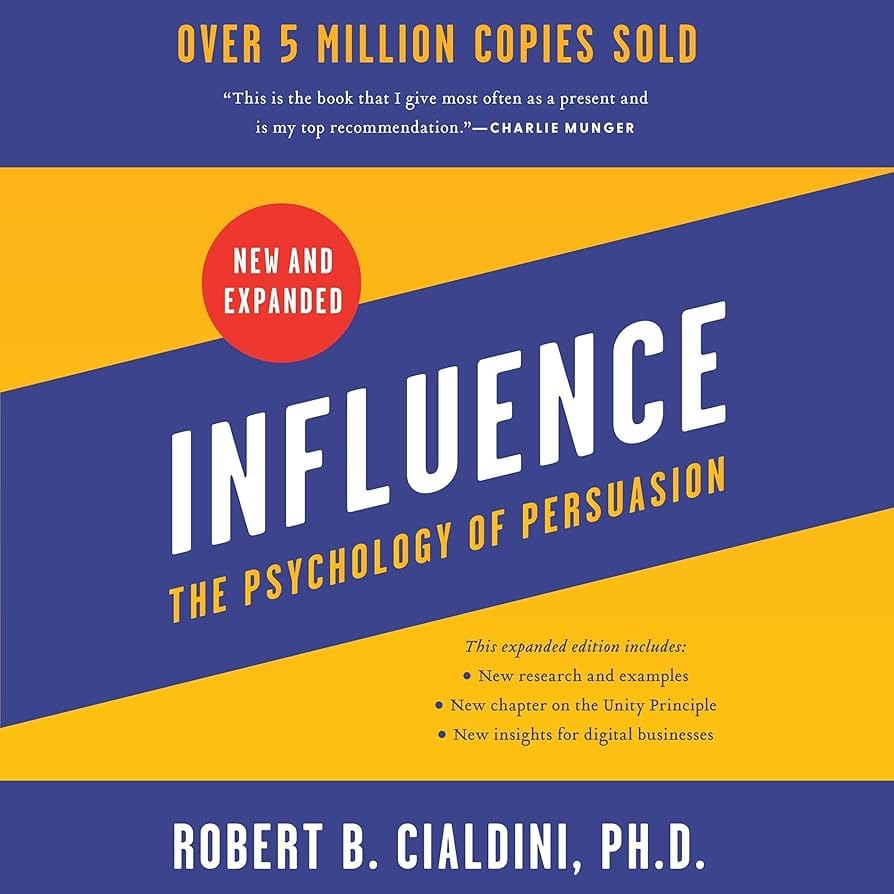Summary of "Influence: The Psychology of Persuasion"

Robert Cialdini's influential work explores six fundamental principles that guide human behavior and can be used to influence people's decisions. Based on extensive research and real-world examples, Cialdini explains how these principles operate automatically in our lives, creating "click, whirr" responses that we often follow without conscious thought.
The Six Principles of Influence:
- Reciprocity: People feel obligated to return favors, gifts, and invitations. We're socialized to avoid being seen as a "moocher" or "ingrate." This principle is exploited when free samples or small gifts create a sense of obligation to purchase.
- Commitment and Consistency: Once we make a choice or take a stand, we feel pressure to behave consistently with that commitment. This manifests in various ways, from small initial commitments ("foot-in-the-door" technique) to written commitments, which are particularly effective.
- Social Proof: We determine what is correct by finding out what others think is correct, especially in ambiguous situations. When uncertain, we look to similar others for guidance. This principle powers phenomena from canned laughter to cult behavior.
- Liking: We prefer to say yes to people we like. Factors that increase liking include physical attractiveness, similarity, compliments, contact and cooperation, and positive associations.
- Authority: We have a deep-seated sense of duty to authority figures. Obedience to legitimate authority is viewed as correct conduct, and we often respond automatically to symbols of authority like titles, clothes, and trappings.
- Scarcity: Opportunities seem more valuable when their availability is limited. This principle is strengthened by loss language, competition, and newly experienced scarcity.
Defending Against Unwanted Influence:
Cialdini concludes with strategies to guard against unwanted influence:
- Recognize when these principles are being used manipulatively
- Distinguish between genuine expertise and fake authority
- Pay attention to your intuitive reactions and responses (like "stomach signals")
- Focus on whether you actually want the item for its function rather than just to possess it
- Ask yourself the "knowing what I now know" question
The book emphasizes that these principles are generally useful shortcuts for decision-making in our complex world. The problem isn't with the principles themselves but with those who counterfeit the evidence that triggers our automatic responses to them.
(Written and illustrated by Claude 3.7 Sonnet)